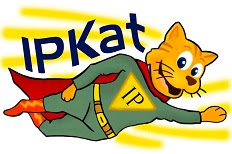
¿Es autoejecutable el Convenio de París? La respuesta depende de cada Estado miembro. En Chile,
en reciente fallo de casación en el fondo de la Corte Suprema, se ha dicho que sí, confirmando esta doctrina en su sistema de propiedad industrial, que tiene al caso
O'Neill como otra de las sentencias que adoptan esta postura -no seguida por el Tribunal de Propiedad Industrial, por sus propias razones-.
En el caso de la marca DOCKERSSUN, la compañía Levi Strauss & Co. recurrió de casación en el fondo en contra de la sentencia de segunda instancia del Tribunal de Propiedad Industrial que sostuvo la inejecutabilidad de este Tratado. Y la cuestión es relevante, pues mediante la decisión de aplicar directamente el Convenio a las partes - como individuos justiciables y no sólo a los Estados como comunidad jurídicamente organizada- se concluye que la acción de nulidad marcaria por registro de mala fe es imprescriptible.
La sentencia resuelve que el Convenio de París para la Protección de la Propiedad Industrial cuyo artículo 6 bis N° 3, se reclamó infringido, entró a regir en Chile conjuntamente con la ley N° 19.039, a partir de su publicación en el Diario Oficial, el 30 de septiembre de 1991, previa aprobación del Congreso Nacional, por lo que ese cuerpo normativo, tal como lo ha
resuelto reiteradamente la Corte Suprema, constituye ley de la República, y como tal es de obligatoria aplicación por los jueces.
En este sentido, agrega el fallo, el Convenio fue promulgado por D.S. N° 425 de 08 de Abril de 1991, y publicado en el Diario Oficial el 30 de Septiembre del mismo año, en cuyo antecedente se indica “ Y por cuanto dicho convenio ha sido aceptado por mí, previa aprobación del Congreso Nacional, según consta en el oficio N° 815 del Honorable Senado, de 28 de Enero de 1991, y el Instrumento de Adhesión se depositó ante el Director General de la Organización Mundial de la Propiedad Intelectual con fecha 13 de marzo de 1991”.

Lo anterior, nos dice la sentencia, conduce necesariamente a sostener que el Tribunal de Propiedad Industrial - de segunda instancia-, incurrió en error de derecho al dejar de aplicar el Convenio de París, en su artículo 6 bis N° 3, atingente al caso, desde que a la fecha de la demanda, y su consiguiente notificación, esto es, 29 de Abril de 2008 y 23 de Junio del mismo año, respectivamente, tal cuerpo legal se encontraba vigente, sin perjuicio del examen que a su turno corresponde efectuar acerca de la concurrencia de los presupuestos materiales de la imprescriptibilidad que consagra tal disposición, cuestión esta última que debe analizarse por los tribunales del fondo al tratarse de los presupuestos fácticos que dan sustento a la norma. Esto no se contrapone con la posterior modificación introducida por la ley 19.996, publicada en el diario oficial el 11 de marzo de 2005, desde que esta última sólo incorporó a la ley 19.039, los principios reconocidos en el Convenio de París, desde 1991, fecha en la que entró en vigencia como ley de la República. Así, los jueces del fondo, se pronunciaron con infracción de ley que influyó en lo dispositivo del fallo, pues al resolver la prescripción opuesta por el demandado, como excepción de previo y especial pronunciamiento, la rechazaron, omitiendo aplicar la norma del artículo 6 bis N° 3 del Convenio de París, vigente a la fecha de notificación de la demanda.
Recordemos que el artículo 6 bis Nº 3 cuyo epígrafe reza "Marcas: marcas notoriamente conocidas", dispone que "[No] se fijará plazo para reclamar la anulación o la prohibición de uso de las marcas registradas o utilizadas de mala fe", estableciendo el principio de la imprescriptibilidad de la acción de nulidad en el supuesto del registro de mala fe.
Lo que resuelve el fallo de casación Dockerssun no es una cuestión pacífica ni uniforme a nivel internacional. Las normas autoejecutables de un tratado son las que no requieren una modificación o creación legal para su ejecución. Ahora bien, la aplicación directa de los tratados internacionales a contiendas internas entre particulares implica dos dimensiones de análisis, una referida a la incorporación dentro de la jerarquía normativa de los tratados en un sistema interno, y otra referida al tipo de enunciados (jurídicos y metajurídicos) que contiene cada tratado, cuestiones que en apariencia se resuelven con una sola respuesta -como en la sentencia- aunque bien vistas las cosas, se trata de cuestiones analíticamente diferentes.

Como es bien sabido, la doctrina de la autoejecutabilidad tiene su origen en la estrategia de aplicación de la doctrina de los derechos humanos (
Conforti,2001) y consiste en la aplicación del derecho internacional por los tribunales internos.Su aceptación depende de lo que establezcan los respectivos sistemas jurídicos nacionales. En el actual estado de la cuestión aún no existe ninguna norma internacional general que disponga de que forma los respectivos Estados deben incorporar el derecho internacional en sus sistemas jurídicos domésticos. Ni siquiera existe la obligación general de hacer que el derecho internacional ingrese al derecho interno.

En el caso chileno la recepción del Derecho Internacional -como el Convenio de París- está normada en cuatro artículos de la Constitución; 32 nº 15; 54 nº1; 93 nº 1 y en el inciso 2º del artículo 5º. Tales son las normas que regulan la incorporación de los tratados internacionales al ordenamiento jurídico interno. Si se asume que los tratados internacionales pueden ser aplicados directamente, surge la cuestión de determinar que tipo de enunciado normativo es el que se pretende hacer aplicable pues no todas las normas de un tratado son necesariamente reglas y, cuando más, se trata de principios, muchos de ellos directrices programáticas dirigidas a los Estados contratantes. En el caso del Convenio de París de 1883 de su texto aparecen tanto normas que contienen principios (sea en sentido estricto, sean directrices programáticas) como reglas (que mandan, prohíben y permiten). El artículo 6 bis,
prima facie, contiene una regla que confiere un derecho a quien tiene un interés marcario para accionar de nulidad ante los tribunales del país miembro respectivo en los supuestos de signos notorios y renombrados, declarando que dicha acción, en el supuesto de mala fe, no prescribe en contra del titular.
No todas las normas de un tratado, como en toda clase de disposiciones normativas (constituciones, leyes, decretos con fuerza de ley, reglamentos, etc.) contienen un mismo tipo de enunciado jurídico.Sólo algunos son enunciados prácticos que contienen derechos accionables por los particulares y que admiten ser aplicados directamente por los jueces, y el art. 6 bis parece ser uno de ellos, lo que necesariamente obliga a distinguir en cada caso el tipo de norma de que se trate.
La sentencia del caso Dockerssun de 10/01/2012 corresponde al rol 10181-2010 redactado por el abogado integrante Sr. Luis Bates. Las sentencias de los casos O'Neill corresponden a los roles 2187/ 2188 de 2009, redactados por el Ministro titular Sr. Hugo Dolmestch.
Fuente de la sentencia: www.poderjudicial.cl








































